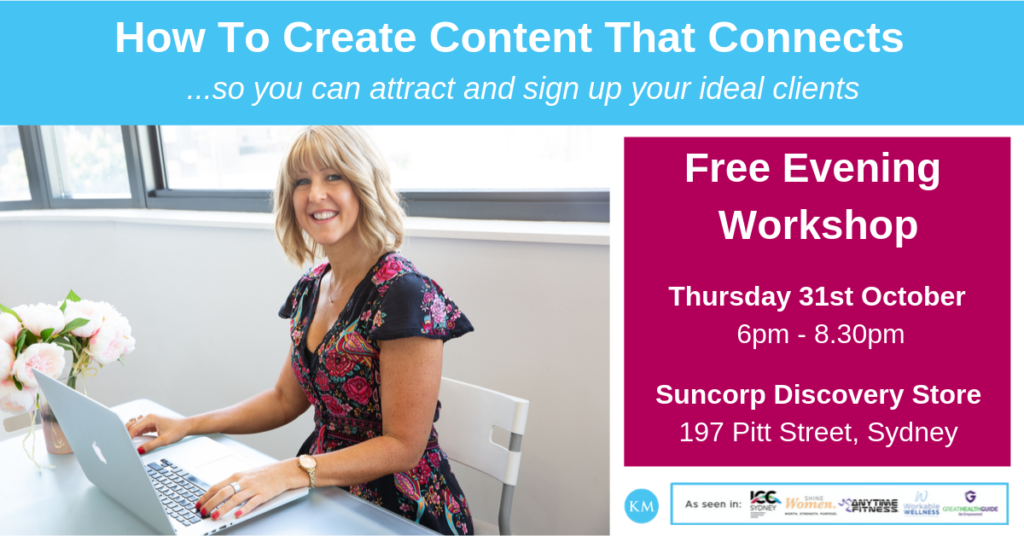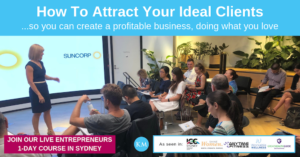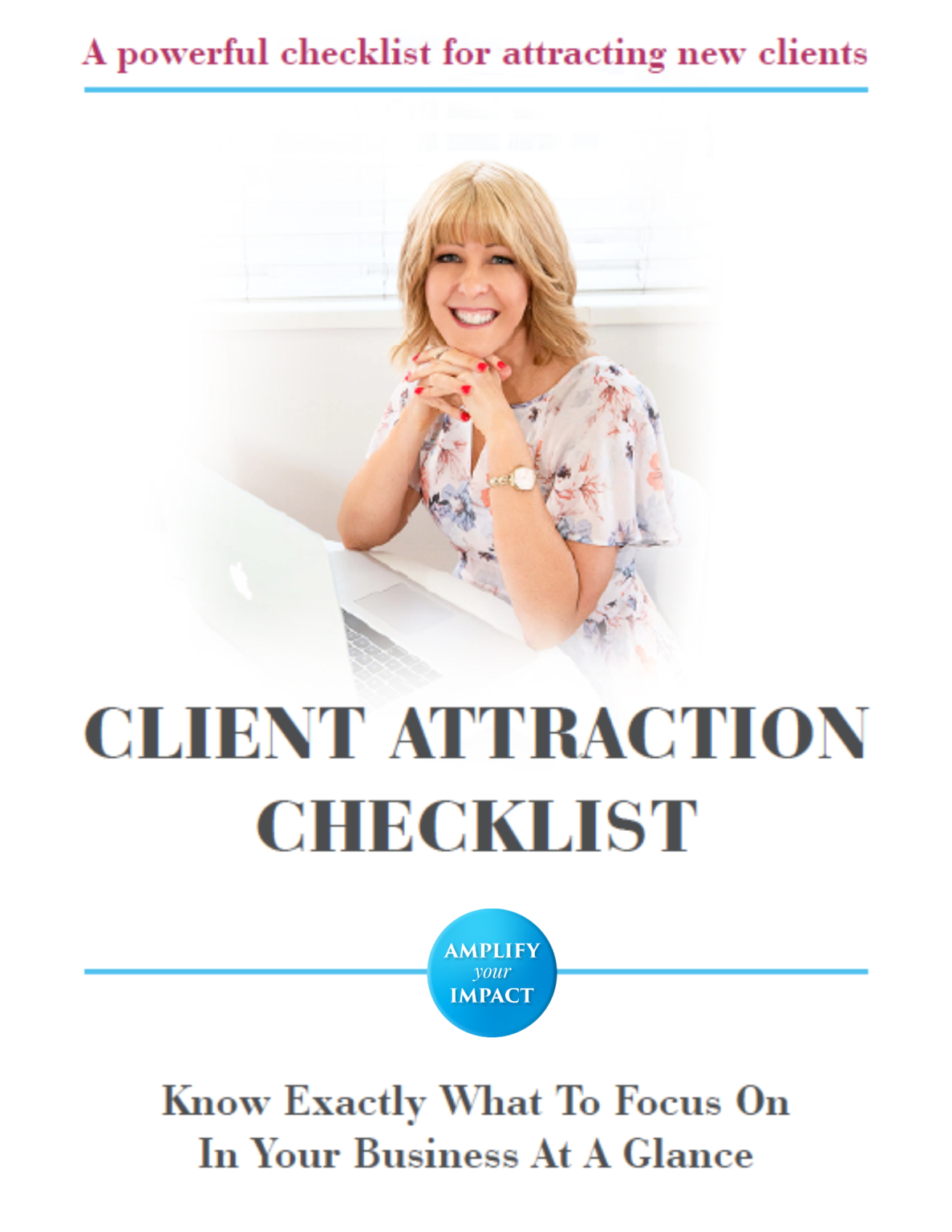I did a poll recently in my Facebook group Amplify Your Influence asking “What do you need the most help with?”
And a lot of people said how to create content, and how write in a way that’s influential and engaging and compelling.
As business owners, we need to be able to capture people’s attention and to be able to keep people engaged with what we’re saying.
This so that people can get to know us better, because the more that people get to know us, the better we can help them.
If you’re not getting to know your people and if your people are not getting to know you within your tribe or community, it’s very hard to influence them.
Think about the people who most influence you, for example.
It’s probably people who you already have consumed a lot of this stuff, maybe you’ve watched videos, maybe you’ve read their articles, listened to their podcast, maybe they’ve got some stuff on YouTube.
The people who influence our lives are people that we know and respect. And I don’t mean we necessarily know them in person, but we know them because we’ve consumed a lot of their content.
Why have we consumed a lot of their content?
Because they know how to engage. They know how to be compelling, influential. They know how to hook us in. They know how to keep us watching, keep us listening.
And in this economy where attention is so valuable, it’s so valuable to be able to capture people’s attention and to be able to inform them, educate them, inspire them, empower them, entertain them, all of those good things, we need to know how to have engaging content.
Also, Facebook really likes it when we are getting engagement, when we’re getting comments and likes.
When Facebook sees that people like your stuff, that people are engaging, that people are responding well to it, they are going to show it to more people.
So if you’re about to launch a program or an offer or some kind of course that you’re putting out, maybe you’re about to release a book or a coaching series, something like that, one of the most important things is to plan out your social media content really well before the launch.
This is so that Facebook has seen that you’re getting a lot of engagement and they’re going to push your posts about that launch out to the community even more.
There are two main reasons that we want to have engaging content to build the trust with our following.
Firstly, to be able to help them provide value, help them go from A to B, help them solve their problems.
Most people are consumed with their problems.
So if you show up and you give a solution, if you give them help, tips and tools and tricks and secrets, things that you’ve learned along the way, they will keep you top of mind.
They don’t need to be groundbreaking, earth-shattering things, by the way, because a lot of people just need reminders.
They need to bring things top of mind.
So if you show up and go, “Hey, have you meditated today?” … it’s not like no one’s ever heard that concept before. But it refreshes it for them.
It doesn’t have to be a brand new concept to be valuable, it can be a reminder.
You could be that breaking someone’s day up with a little bit of inspiration, something funny, something that that’s helpful, depending on your ideal clients, your target market.
I teach a lot of secrets to attract clients through content. But here are three of my favourite secrets to creating more engaging content.
1. Wrap your posts with questions
Wrap your posts, sandwich your posts with questions.
When you start with a question and your caption and your social media caption, and by caption I mean you’re posting your image and you’re putting the writing with the image, you want to start with a question as much as possible whenever it’s relevant.
A question hooks people in as opposed to a statement.
So you might say, for example, you’re posting a photo of you at an event. So you can either say, “Here’s me at this event, amazing event.”
Or you could say, “Do you love going to live events? Do you love the energy of a live audience? What’s one of your favorite things about going to an event? Do you ever find that awkward moment when you ask someone to have a selfie and they don’t want to? Has that ever happened to you?”
You’re hooking people in with a question.
You might start with a problem.
“Do you ever feel frustrated at this? Do you ever struggle with this? Do you ever wonder blah, blah, blah?” So a question at the start of your post and then a question at the end of your post. So a question at the end gets the person thinking.
You might want to say, “What’s your favorite tip?”
You might share three tips and you say, “What’s your favorite?” You might ask, “What’s one thing that you can do today to feel blah, blah, blah.” like whatever you’ve just talked about in your post.
So you’re not just posting for posting sake, you’re posting so that you can actually provide some value and get someone thinking, get them thinking outside of their normal way of thinking outside of their box and challenge them.
Throw out a challenge to get someone thinking a little bit differently.
You don’t want to try and change everything in one caption. It’s just having one main idea. In speaking we call it knocking over the one domino. The domino effect that you knock over this one domino and it affects everything else.
So think about your topic, the thing that you help your clients with. Think about your topic and what’s all different ways to share about that topic. And you’re wrapping that caption about that topic or whatever…
For example, my topic is influence, but underneath that, I’m talking about content for example, in this video.
So one thing is how to engage, how to get people to engage. That’s my one domino purpose for this live video. And then within that one big idea, there are three different secrets.
You don’t want to try and push over too many dominoes. It’s just one domino, one big idea, how to get people to engage, but then there are three secrets.
So whatever your topic is, underneath that main umbrella topic, let’s say your main thing is confidence, you help people get confident.
So underneath confidence, you might have the topic of positive self-talk for example. And then you might say, “Here are my three secrets of how to use positive self talk to get a promotion.”
And so the whole idea of that post is to help someone get a promotion through their positive self-talk.
But you’ve got three tips. I hope that makes sense. So you’ve got that one big idea and you wrap it with a question.
So you put a question at the start, a question at the end.
Not every single post requires it, but I want you to challenge yourself to think before you just post statements, how can you actually turn it into questions?
All right. Secret number two, and it’s not a secret at all, a lot of people do it, but a lot of people actually forget to do it…
2. Share simple stories
When you share simple stories, not a whole hero’s journey and the turning point and the protagonist and antagonist or whatever it is, the hero and the villain.
You don’t have to make it complex, you can literally share a simple story.
You might say something like, “I was out walking in the Bush the other day and I came across a Kookaburra and blah blah blah…”
And you tell a little bit of a metaphor from that story.
So you just share stories behind the scenes in your life.
It doesn’t have to be complex. You just want to draw people into that story. If you’re just posting facts and figures and tips and how-tos in steps without any story, it can be a little bit dry.
People could just Google that, right?
So you want to inject your personality, you want to inject some visuals to what you’re sharing and actually bring it to life.
3. Have a balance between credibility and vulnerability
Credibility is basically sharing with your audience the experience you have, the qualifications you have, the cool things you’ve done.
So maybe you’ve spoken on a podcast or maybe you have been interviewed or you’ve written a guest blog post for someone, you share that with your community.
So you’re sharing, that’s credibility. That’s positioning yourself as an expert in your industry. And you’re also positioning yourself as the authority. So that’s your credibility.
But if you just show up and talk about how amazing you are all the time, people aren’t going to like that.
You don’t want to put yourself on a pedestal above people. You also want to balance that with vulnerability by being very transparent in saying something like, “You know, I still struggle with this sometimes.”
Or, “I still find this hard and I find myself in a hot mess on the bathroom floor crying.
And then I have to jump on and do a Facebook Live. Who relates?”
So you’re actually showing yourself to be a really real, normal person. You’re not trying to be all polished and perfect all the time.
And finding that sweet spot and the balance between being professional, and personal.
It should be in both. Not trying to be like everyone else and trying to have it super polished, but just showing up and being real and speaking from the heart. You can do this by not over-planning things.
So for example, with these Facebook Lives, I just plan my three points.
I plan the top title and then I just speak from the heart because I know my content.
So I haven’t planned word for word, so I’m not constantly losing connection with you by reading notes.
You’ll notice that I’m always looking at you. Well, I’m actually looking at a lens on my iPad at the moment, but it feels like I’m looking at you because I’m not so caught up in my notes. That’s where you got to stick with where your credibility lies.
My credibility lies in helping business owners to grow their business through specific marketing strategies. One of them being content creation. So I can speak about this topic all day. I don’t need notes.
So you just have your little prompts. I just put a little piece of card with a hole cut in the middle around my lens so I can just refer to my three key points, but other than that, I’m just talking to you about something I love talking about, something that I know about, and that’s what you can do as well.
So often people put off doing a Facebook Live because they think they’ve got a plan every word. You don’t. If you had to plan every single word, you’d probably not do enough of them.
It’s actually better to get something out there that’s unperfect, I’ve never done a perfect Facebook Live ever, but people still get value from that. I always get people saying, “I needed to hear that. That was really interesting. I’m going to try that.”
You don’t have to be perfect to be able to help people.
Now I’m going to recap the 3 secrets.
Number one is to wrap your post with questions, a question at the beginning, a question at the end as much as possible.
This is by the way, how to really get people engaging and hooking people in.
Number two is to share simple stories. Share a simple story that happened in your life recently, today, yesterday. You might share some big significant story from years ago, but you don’t have to.
And then number three is to have a balance between credibility and vulnerability. So that you are talking about your expertise and your authority, but you’re also balancing that with a good amount of humility, transparency, and sharing how you struggled as well.
If you would like to know more tips on how to create content that connects and engages and draws people in and builds that trust and that rapport with people so that they will take that next step towards you, I’m running a free workshop on Thursday the 31st of October in Sydney.
It’s Halloween, so hopefully you’re not trick-or-treating that night and you can come and check out the workshop, or maybe you go trick-or-treating afterwards or before.
I’ll be sharing how to create content that connects, lots more specific tips and tricks, the exact words to use and not use in your content, mistakes that people make when it comes to creating content and copywriting.
I’m to go through seven steps of how to create engaging content and loads more. It’s action-packed. I’m going to be putting on some snacks and you get to meet some other like-minded entrepreneurs, so come along and join us.
Learn more about the ‘How To Create Content That Connects’ Workshop








 Would you like help to overcome these client-attraction challenges?
Would you like help to overcome these client-attraction challenges?